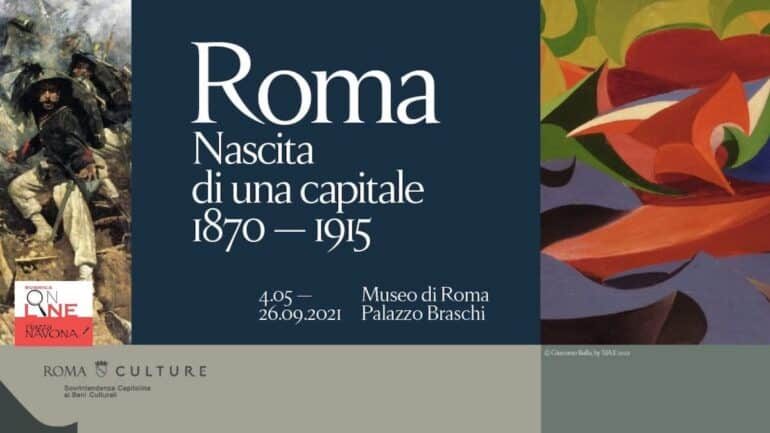Rome celebrates 150 anniversary as Capital of Italy in new exhibition at Museo di Roma – Palazzo Braschi
In celebration of Rome’s 150th anniversary since the proclamation of becoming the capital of the newly-formed Kingdom of Italy, Museo di Roma is displaying “Nascita di una Capitale 1870-1915”, an exhibition about the history of Rome from unification to WW1. The mostra was curated by Federica Pirani, Gloria Raimondi and Flavia Pesci. The varied selection of over 600 works ranging from paintings and sculptures to documents and documentaries, each illustrate the lesser-known historical, architectural and political reformations that shaped Rome.
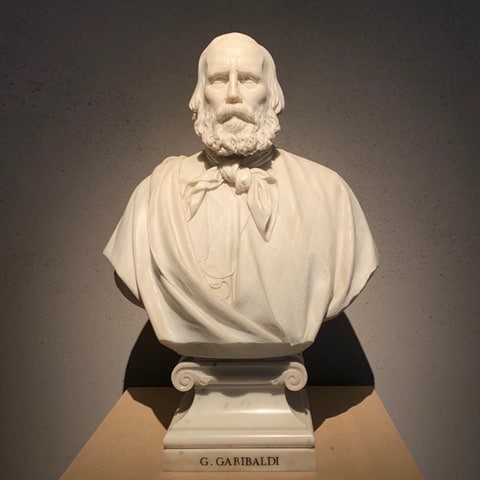
After passing the statues of Achilles and Antonino Pio up the stairs to the single-story gallery, the exhibition itinerary is opened with Michele Cammarano’s symbolic painting of the “La Breccia di Porta Pia”. There are 18 rooms in total, and each corresponds to a different section of Rome’s history. As the museum progresses, you can appreciate the “scultura di testa” of Vincenzo Vela’s Count of Cavour and Luigi Maioli’s Giuseppe Garibaldi. The next rooms include the history of the Tiber river, and its relationship with Rome as the base of trade and leisure. There are many interesting photographs documenting the frequent floods of the 1900s, showing a flooded Castel Sant’Angelo and the Pantheon. In fact, the paintings of these empty streets of Rome were not too dissimilar to the eeriness that Roman inhabitants witnessed during this pandemic!
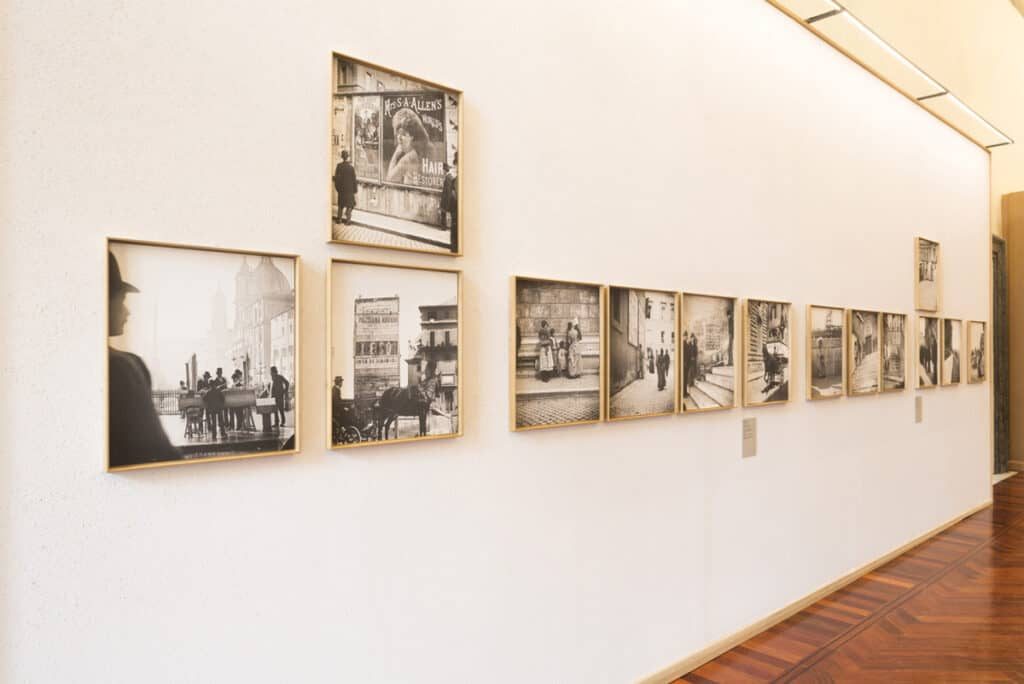
As you enter the 6th room, you can witness the gradual building of Rome from its demolition and dust. Adverts from 1904 promote the importance of reconstructing their capital city. The exhibition holds a photograph gallery of the building and celebration of Via del Corso, Palazzo Colonna, and Castel Sant’Angelo. Needing to give hasty shelter to the new population of over 200,000 immigrants, the Italian masters began to build “banal, bleak and bland- unsightly” neighborhoods in order to build their “third Rome”. So it was that post-unification Rome was planned and traced, resulting in not only a building crisis but economic and social impacts. The latter years of the 20th century were characterized by authoritarianism and repression, and this in turn led to policies of welfare and the Socialist Parties. These rooms also contain interesting advertisements to the public to join the “Avanti Socialista” movement from 1906, by Duilio Cambellotti.
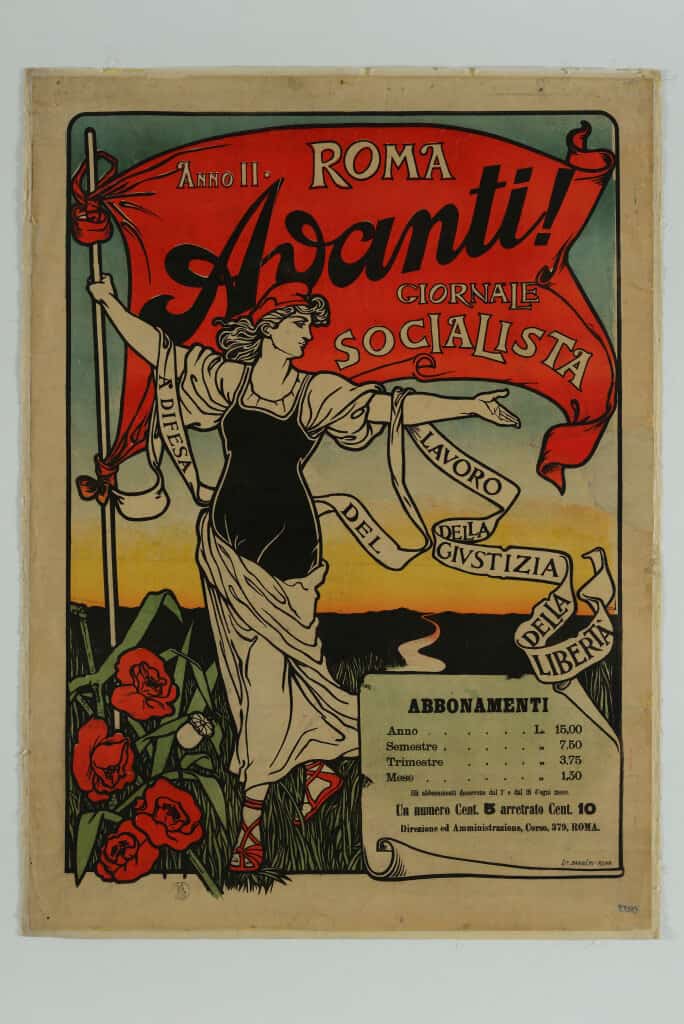
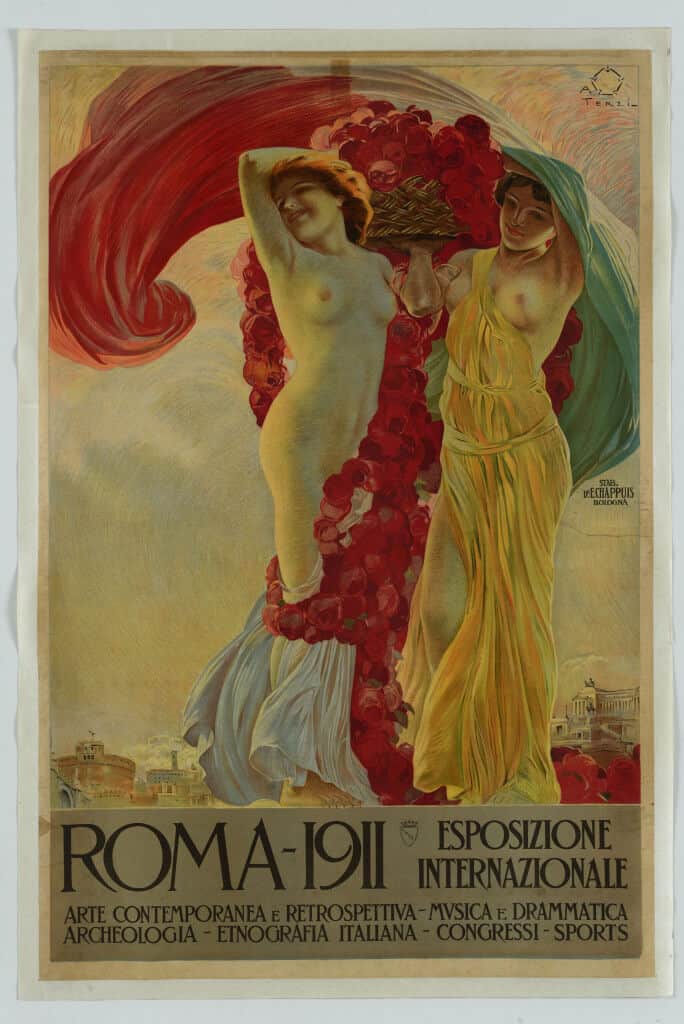
The following rooms further detail the demolition and re-construction of Prati, the Jewish Ghetto and the Tempio Maggiore di Roma (represented by an intriguing wooden model), and the parliament buildings throughout Rome. My favorite part of the exhibition was the history of the construction of the Altare della Patria or Vittoriano – a monument built in honor of Victor Emmanuel II, the first king of unified Italy. This dominating structure was the project of Giuseppe Sacconi and is very easily found in Piazza Venezia, a 3-minute walk from the Roman Forum. Viewing pictures of the thousands of people celebrating its construction after 40 years puts into perspective the physical magnitude of the striking tribute. In fact, the statue of the horse in the center of the building was so large that an inaugural toast and dinner party was hosted inside the horse between the Mayor of Rome and the 21 architects that worked on it!
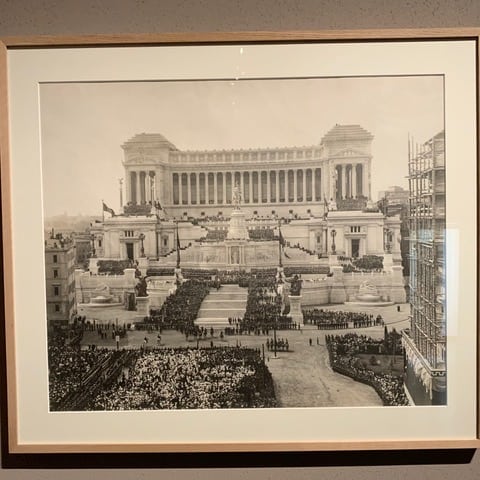
The final rooms detail the socio-cultural changes – from art and trade to tourism and sport – all leading up to the outbreak of World War One. The gradual lead-up to modern Rome is highlighted through Count Giuseppe Primoli’s unpublished picture exhibition between 1888 and 1903. The “Reprise of Rome” is further shown through a series of video clips of people visiting the Colosseum, Trevi Fountain, and the Ruins. Evenings spent at Verdi’s opera and horse races entered high society at this time, and the museum offers a glimpse into the advertisements and brands that the image of the modern city were based on.
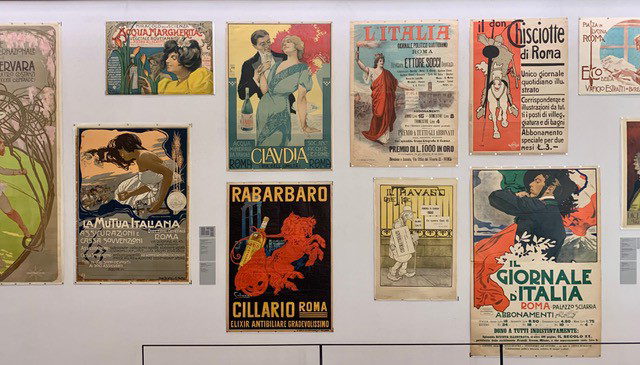
The drastic difference between the wealthy and the suffering population of 1872 is exemplified by “I poveri sui gradini della chiesa di San Gregorio al Celio”, the large painting by Federico Zandomeneghi:
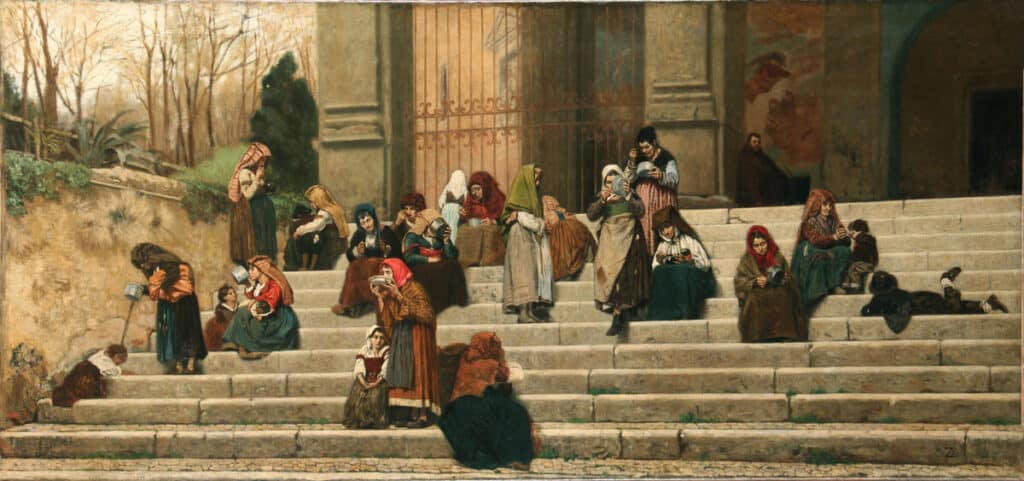
After the exploration of Ernesto Nathan’s beneficial political life as Rome’s Mayor, exhibition visitors can witness how Rome went from “deserted and desolate” (Gioacchino Belli, 1936) and inhabited by nomads and agro farmers, to one with practical education and schools. Due to Nathan’s council program, a group of intellectuals gave life to social emancipation – committed to the spread of education, infrastructure, and public health throughout Italy.
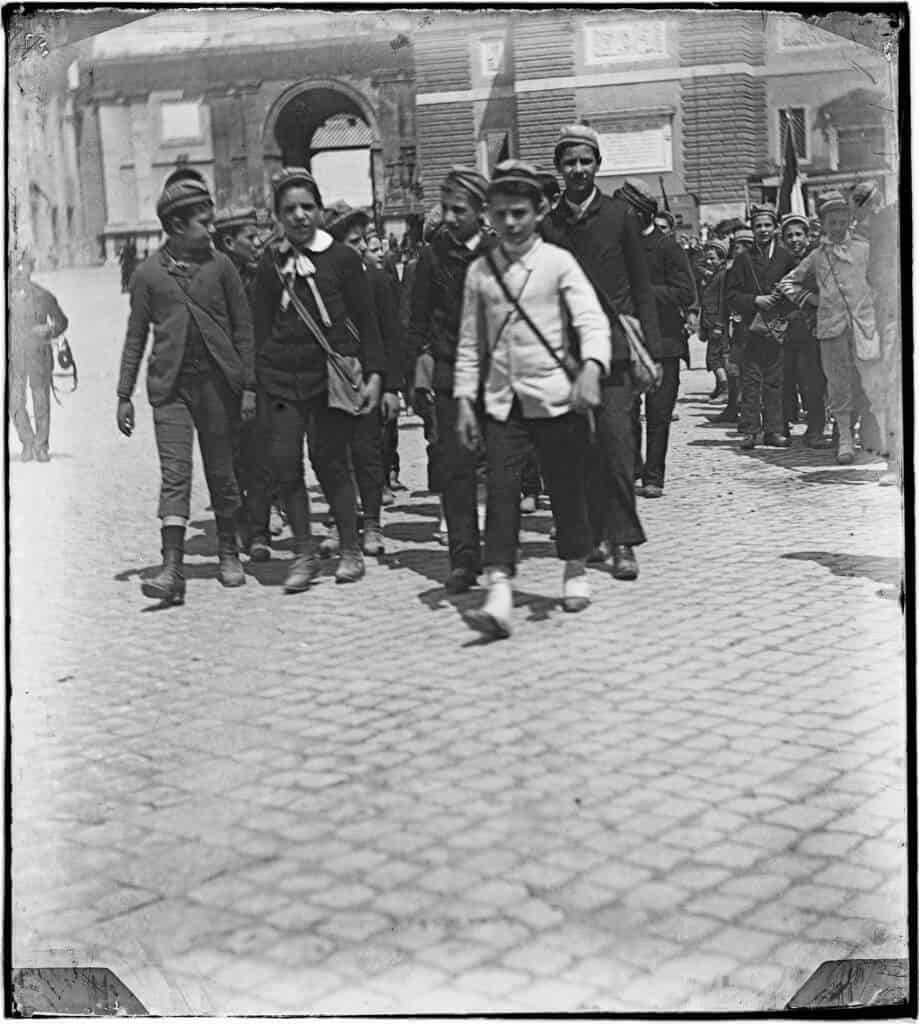
Starting with the Capture of Rome and concluding with Italy’s political and social upheaval after the joining of the first World War in 1915, the “Nascita di una Capitale 1870-1915” exhibition is not only educational but entertaining to all visitors.
It must be noted that there is no English translation of the information boards; Italian is the only language offered. The exhibition is being held in Palazzo Braschi, located between Campo Dei Fiori and Piazza Navona from May 4 to September 26, 2021.
TILL 26 SEPTEMBER 2021
Museo di Roma
Palazzo Braschi
Piazza di San Pantaleo 10 – Piazza Navona 2
Opening hours
Tuesday – Sunday, 10am – 7pm
Tickets
€4-11
More booking info here
museodiroma.it


